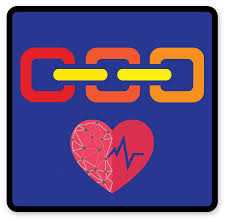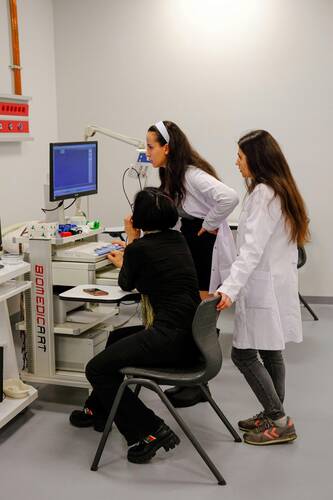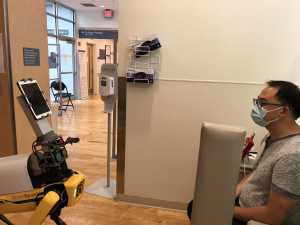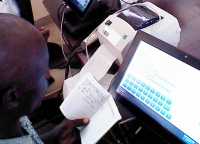Aside from patient care on an individual basis, EHR data analytics also revolutionizes population health management. Through the review of...
Electronic Records, Mental Health Research, Technology, Telemedicine / 17.02.2025
How Healthcare Technology is Reducing Physician Burnout
 Physician burnout is a growing crisis in the healthcare industry, with many doctors facing overwhelming workloads, excessive administrative burdens, and emotional exhaustion. According to recent studies, nearly 50% of physicians experience symptoms of burnout, leading to reduced job satisfaction, increased medical errors, and even early retirement. Fortunately, advances in healthcare technology are helping to alleviate these stressors, allowing doctors to focus more on patient care rather than paperwork.
Let's explore how modern healthcare technology is playing a crucial role in reducing physician burnout and improving overall well-being for healthcare providers.
Physician burnout is a growing crisis in the healthcare industry, with many doctors facing overwhelming workloads, excessive administrative burdens, and emotional exhaustion. According to recent studies, nearly 50% of physicians experience symptoms of burnout, leading to reduced job satisfaction, increased medical errors, and even early retirement. Fortunately, advances in healthcare technology are helping to alleviate these stressors, allowing doctors to focus more on patient care rather than paperwork.
Let's explore how modern healthcare technology is playing a crucial role in reducing physician burnout and improving overall well-being for healthcare providers.
1. Electronic Health Records (EHRs) that Prioritize Physician Efficiency
One of the biggest contributors to physician burnout is the time spent on administrative tasks, particularly electronic documentation. Traditional EHR systems have often been complex, time-consuming, and frustrating, but newer platforms are designed with physician efficiency in mind.- Streamlined User Interfaces Modern EHRs now feature intuitive designs that make navigating patient records easier.
- Voice-to-Text Documentation AI-powered dictation tools allow doctors to document notes quickly without typing.
- Automated Workflows Features like auto-populating fields and predictive text reduce the time spent on repetitive data entry.
The healthcare industry has seen significant change recently as more focus is on offering people more easily available and more effective medical treatments. Sometimes, a patient's capacity to get quick treatment is hampered because, in the past, medical attention required appointments that took a lot of time, long waiting times and frequent in-person visits. On the other hand, developments in healthcare solutions have streamlined the patient experience and guaranteed that people obtain high-quality medical treatment with the least disturbance.
Building medical care accessibility and convenience
Geography, mobility issues, or hectic schedules often make it difficult for patients to access medical treatments. Technology-driven healthcare solutions have significantly reduced these barriers by enabling remote consultations, online prescriptions, and timely treatments. Eliminating logistical challenges ensures that modern healthcare systems allow people to seek medical attention without disrupting their daily routines. This shift toward convenience particularly benefits patients with chronic conditions, who require ongoing care but may find frequent clinic or hospital visits challenging. Online providers such as Anytime Doctor are very important in ensuring patients get competent and timely treatment free from needless waits, optimising access to medical care. As digital healthcare develops, these developments will increase patient outcomes, improve accessibility, and redefine medical treatment.
(more…)
Electronic Records, General Medicine, Health Care Systems / 16.01.2025
Is Your Private Practice Stuck in 2024? Here’s What You Need to Know to Dominate 2025
Let’s be real—running a private practice has changed. The days of doing things “the way they’ve always been done” are long gone. Patients expect more. Providers are juggling tighter margins, growing admin work, and tech that’s supposed to help—but often just clogs up the flow. You’re working harder to deliver quality care, but what about the business side? If your practice is still operating like it’s 2019, you’re leaving opportunities—and possibly revenue—on the table.
Rethink Your Digital Front Door
If you’re thinking, “We have a website; we’re good,” you’re already behind. Patients aren’t just stumbling onto your practice anymore—they’re shopping for care like they shop for shoes: scrolling through reviews, comparing options, and judging whether you’re worth their time (and money) before they even pick up the phone.
Your digital presence is your front door, and it’s not just about looking professional—it’s about feeling approachable. Think user-friendly scheduling where no one has to dig through four menus just to find an open slot. Think virtual check-in that cuts out that awkward clipboard shuffle in the waiting room. Think SEO that makes your practice pop up when someone searches for “best pediatrician near me” at 2 a.m.
Every friction point—every glitchy “Contact Us” form or slow-to-load page—is sending patients straight to the next provider in their search results. Digital-first convenience isn’t a luxury anymore. It’s a dealbreaker.
(more…)
Electronic Records / 11.12.2024
Morbidity and Mortality Prediction Model Improved by Incorporating Data from Electronic Records
MedicalResearch.com Interview with:
Prof. Adam J. Rose
Shuli Brammli-Greenberg and Adam J. Rose share senior authorship.
Faculty of Medicine, Hebrew University of Jerusalem
Beit-Horon, Jerusalem, 9093500, Israel
MedicalResearch.com: What is the background for this study? Would you briefly explain what is meant by the Elixhauser Comorbidity Model?
Response: Patients admitted to the hospital can have very different levels of illness severity. In addition, different hospitals may admit different numbers of very sick patients. Therefore, comparing two hospitals regarding something like length of stay or in-hospital mortality is not valid unless one adjusts for the illness burden of the population of patients at each hospital.
Risk adjustment is the name for the process of building a model to predict the risk of each patient for a particular outcome, such as mortality or readmission, based on what is known about them and their illness burden. By summing all the risks of patients at a hospital, one gets an aggregate sense of the illness burden at the hospital, and different hospitals can be compared.
The Elixhauser Comorbidity Model is a widely-used risk adjustment model which performs well in the sense that it is very predictive of outcomes like mortality. It also has the advantage of being calculated from diagnosis codes, which are widely available data for hospitalized patients.
(more…)
Pharmacology, Technology / 16.10.2024
Pharmaceuticals Management in Hospital CPOE Systems Is Complicated and Here’s Why
Integrated within a hospital’s Computerized Physician Order Entry system or not, pharmacy management systems play a critical role in healthcare...
Health Care Systems, Technology / 15.10.2024
How Efficient IT Project Services Can Improve Healthcare Operations
With medical needs escalating and technology advancing at an incredible pace, the speed of patient care is about to become much faster and more effective. Healthcare organizations are under pressure to do more with less. Businesses are finally able to leave their tech logjam behind when they plug into lean IT project services. Suddenly, the thorny vines of procedure fall away, and genuine innovation gets a second wind. Low costs don't mean low-quality care.. What if healthcare operations could run like a well-oiled machine? For that to happen, they need to corral their IT projects, but that's a tall order given the specific challenges they face.
Streamlining Operations Through Digital Transformation
Hospitals and clinics are constantly faced with the challenge of reducing costs without sacrificing the level of care their patients receive. Efficient IT project services facilitate the implementation of digital tools and technologies that improve operational workflows and processes. One area where IT project services provide critical support is electronic health record (EHR) integration. Healthcare goes high-tech when EHR systems are properly set up. It's like having a bird’s-eye view of a patient's entire journey, allowing doctors to spot connections and make swift, informed decisions. Under the watchful eye of regulatory authorities like HIPAA, IT project managers expertly integrate these systems, implementing checks and balances to prevent malfunctions and mishaps. When automation technologies are properly integrated, they morph administrative tasks into background noise, allowing healthcare professionals to redirect their attention to the ones who need it most: their patients. Think of automation as a behind-the-scenes team player. By handing over the routine tasks, healthcare pros can refocus on what matters most: providing top-notch care. (more…)
AI and HealthCare, Technology / 12.09.2024
Exploring the Opportunities: How ChatGPT Enhances the Capabilities of Modern Healthcare Workers
Integrating artificial intelligence (AI) into healthcare has opened numerous doors for improving efficiency and patient care. ChatGPT, an AI language model that can process and generate human-like text, is among the most promising advancements in AI-driven tools. Chat GPT for medical professionals is emerging as an innovative way to streamline workflows, assist with medical research, and enhance patient communication. This article delves into ChatGPT's opportunities for healthcare, its current use cases, and how it can transform the medical field.
 (more…)
(more…)
 (more…)
(more…)
Electronic Records / 10.09.2024
Enhancing Patient Data Security with Advanced Network Solutions in Healthcare
In today’s healthcare environment, safeguarding patient data is a core responsibility. As technology continues to integrate into healthcare systems, from Electronic Health Records (EHR) to remote patient monitoring, organizations must address cybersecurity threats effectively. This article explains how advanced network solutions can strengthen patient data security, ensuring compliance and trust.
The Importance of Network Security in Healthcare
Healthcare organizations manage vast amounts of sensitive patient data, making them prime targets for cyberattacks. From ransomware to data breaches, these incidents can compromise patient privacy and disrupt essential services, leading to financial and reputational damage. Advanced network solutions are crucial in mitigating these risks. By adopting comprehensive security protocols and modern technologies, healthcare providers can protect patient data and maintain uninterrupted service.
Education, Electronic Records, Technology / 06.09.2024
Can Medical Education Benefit from EHR Systems Integration?
As we stand today, EHR systems are not a part of the medical curricula. But med students go on to work in hospitals or start their own practice that would definitely involve EHR systems. According to the Office of the National Coordinator for Health Information Technology (ONC), 96% of hospitals use EHR systems, which is almost the entirety of the healthcare setup.
Integrating Electronic Health Records (EHR) into medical education can have several benefits for prepping future healthcare professionals. This approach can potentially make learning better for medical students and ultimately boost patient care quality.
Moreover, specialized areas like cardiology medical billing could benefit significantly from early exposure to EHR systems, helping students understand the intricacies of managing billing in these complex fields.
This article covers the potential benefits of EHR systems integration into medical education, challenges, solutions, and more.
Key Takeaways:
- Integrating EHRs makes learning better for medical students.
- Improves doctor-patient communication.
- Offers easy access and better organization for students.
- Tackles challenges related to documentation and professionalism.
- Hands-on experience and simulation training are key for effective learning.
- Hospital policies and liability concerns can limit EHR access.
- Proper educational frameworks are crucial for successful EHR adoption.
- EHRs contain real-world scenarios and promote understanding of clinical workflows.
Author Interviews, Duke, Electronic Records, Health Care Systems, JAMA / 20.04.2021
Burnout Among Physicians Only Partly Due To Electronic Medical Records
MedicalResearch.com Interview with:
Eugenia McPeek Hinz MD MS FAMIA
Associate CMIO - DHTS
Duke University Health System
MedicalResearch.com: What is the background for this study?
Response: Clinician burnout rates have hovered around 50% for much of the past decade. Burnout is a significant concern in healthcare for its effects on care givers and associated downstream adverse implications on patient care for quality and safety. The ubiquitous presence of Electronic Health Records (EHR) along with the increased clerical components and after hours use has been a significant concern for contributing to provider burnout. (more…)
Author Interviews, Brigham & Women's - Harvard, Cost of Health Care, COVID -19 Coronavirus, Electronic Records, JAMA, Technology / 04.03.2021
Calling Dr. Spot: Robotic TeleDog Can Perform Key Hospital Tasks
MedicalResearch.com Interview with:
Carlo Giovanni Traverso, MB, BChir, PhD
Associate Physician, Brigham and Women's Hospital
Assistant Professor,
Peter R. Chai, MD, MMS
Emergency Medicine Physician and Medical Toxicologist
Harvard Medical School
Brigham and Women's Hospital
Department of Medicine
 MedicalResearch.com: What is the background for this study? What are some of the functions that Dr. Spot can facilitate?
Response: During the COVID-19 pandemic, we wanted to consider innovative methods to provide additional social distance for physicians evaluating low acuity individuals who may have COVID-19 disease in the emergency department. While other health systems had instituted processes like evaluating patients from outside of emergency department rooms or calling patients to obtain a history, we considered the use of a mobile robotic system in collaboration with Boston Dynamics to provide telemedicine triage on an agile platform that could be navigated around a busy emergency department. Dr. Spot was built with a camera system to help an operator navigate it through an emergency department into a patient room where an on-board tablet would permit face-to-face triage and assessment of individuals.
(more…)
MedicalResearch.com: What is the background for this study? What are some of the functions that Dr. Spot can facilitate?
Response: During the COVID-19 pandemic, we wanted to consider innovative methods to provide additional social distance for physicians evaluating low acuity individuals who may have COVID-19 disease in the emergency department. While other health systems had instituted processes like evaluating patients from outside of emergency department rooms or calling patients to obtain a history, we considered the use of a mobile robotic system in collaboration with Boston Dynamics to provide telemedicine triage on an agile platform that could be navigated around a busy emergency department. Dr. Spot was built with a camera system to help an operator navigate it through an emergency department into a patient room where an on-board tablet would permit face-to-face triage and assessment of individuals.
(more…)
 MedicalResearch.com: What is the background for this study? What are some of the functions that Dr. Spot can facilitate?
Response: During the COVID-19 pandemic, we wanted to consider innovative methods to provide additional social distance for physicians evaluating low acuity individuals who may have COVID-19 disease in the emergency department. While other health systems had instituted processes like evaluating patients from outside of emergency department rooms or calling patients to obtain a history, we considered the use of a mobile robotic system in collaboration with Boston Dynamics to provide telemedicine triage on an agile platform that could be navigated around a busy emergency department. Dr. Spot was built with a camera system to help an operator navigate it through an emergency department into a patient room where an on-board tablet would permit face-to-face triage and assessment of individuals.
(more…)
MedicalResearch.com: What is the background for this study? What are some of the functions that Dr. Spot can facilitate?
Response: During the COVID-19 pandemic, we wanted to consider innovative methods to provide additional social distance for physicians evaluating low acuity individuals who may have COVID-19 disease in the emergency department. While other health systems had instituted processes like evaluating patients from outside of emergency department rooms or calling patients to obtain a history, we considered the use of a mobile robotic system in collaboration with Boston Dynamics to provide telemedicine triage on an agile platform that could be navigated around a busy emergency department. Dr. Spot was built with a camera system to help an operator navigate it through an emergency department into a patient room where an on-board tablet would permit face-to-face triage and assessment of individuals.
(more…)
MedicalResearch.com Interview with:
Celine Latulipe PhD
Associate Professor
University of Manitoba
MedicalResearch.com: What is the background for this study? What are the main findings?
Response: We wanted to find out how many hospitals offer proxy accounts for caregivers of adult patients. Most patient portal systems allow proxy accounts for parents of pediatric patients, so we know the underlying systems support the creation of proxy accounts. When we were starting this research, the two big healthcare systems where I was located did NOT offer such proxy accounts for caregivers of adult patients, and a staff person at one of those hospitals suggested adult patients share their passwords with their caregiver, if the caregiver needed access to the portal.
As a computer scientist, I am well aware of the security and privacy risks associated with password sharing, and I was appalled by this advice. So we did this survey across the US and we found that 45% of the staff contacted in our study gave similar password sharing advice. This is hugely problematic. Caregivers using a patient's password means the caregiver can see everything in the medical record, including things the patient might not want the caregiver to know, such as past diagnoses of stigmatized illnesses, substance abuse or reproductive health decisions. Also, because password re-use is common across systems, a caregiver with a patient's portal password may now have access to the patient's online banking.
(more…)
Author Interviews, Cost of Health Care, Electronic Records / 20.03.2020
Best Practice Alerts from Electronic Records Can Reduce Redundant Lab Testing
MedicalResearch.com Interview with:
Rohit Bishnoi, M.D.
Division of Hematology and Oncology
Department of Medicine
University of Florida
Gainesville, FL
MedicalResearch.com: What is the background for this study?
Response: National Healthcare expenditure was $3.6 trillion in 2018 and 17.7% of Gross Domestic Product. Redundant laboratory testing is one part of this problem that is more pronounced in hospitalized patients as they are often seen by multiple physicians from the time of admission till discharge. This added burden on the US health care system leads to increased costs, decreased patient satisfaction, and unnecessary phlebotomy. It also leads to iatrogenic anemia over time and unnecessary transfusions. The Choosing Wisely initiative recommendation from the Society of Hospital Medicine, Society for the Advancement of Blood Management, and the Critical Care Societies Collaborative have recommended avoiding repetitive labs.
As one of the physicians in the division of hospital medicine at the University of Florida (UF) Health Shands hospital, we encountered this problem frequently where a patient will get multiple HbA1c or lipid profiles or iron studies during the same hospital stay without any clear clinical indication. Most often these tests were ordered by different physicians seeing the same patient and not realizing that either the test has already been ordered or sometimes it is related to practice pattern of physicians. We often heard complaints about this from our nursing and laboratory staff and, most importantly by patients themselves. (more…)
Author Interviews, Compliance, Electronic Records, JAMA, University of Pennsylvania / 05.03.2020
How Best to Measure Patient Persistence with Medications? Self Report or Pharmacy Fill?
MedicalResearch.com Interview with:
Alexander C. Fanaroff, MD, MHS
Assistant Professor of Medicine, Division of Cardiovascular Medicine
University of Pennsylvania
MedicalResearch.com: What is the background for this study?
Response: This is a secondary analysis of the ARTEMIS, a cluster randomized trial of copayment assistance for P2Y12 inhibitors in patients that had myocardial infarction. One of the primary endpoints of ARTEMIS was persistence with P2Y12 inhibitors: Did the patient continue to take a P2Y12 inhibitor over the entire 1 year following MI? In ARTEMIS, we captured persistence data in two ways, patient report and pharmacy fill records. What we did in this study was to look at the agreement between persistence as measured by these two methods. (more…)
Allergies, Author Interviews, Electronic Records / 13.11.2019
False Penicillin Allergy Hard to Remove From Medical Records
MedicalResearch.com Interview with:
Sonam Sani MD
Allergy & Immunology Fellow
NYU Winthrop Hospital
MedicalResearch.com: What is the background for this study?
Response: Penicillin allergy label removal is becoming more common. Studies have shown that while 10% of the general population report an allergy to penicillin, after testing only 1% truly have an allergy. Allergists have the ability to evaluate patient’s for penicillin allergy by performing skin tests and oral challenges. However, even when people test negative for penicillin allergy, they still face barriers to having the label removed. We are noting more and more that despite having negative testing, upon further encounters, our patients still have their penicillin allergy label. (more…)
Annals Internal Medicine, Author Interviews, Electronic Records / 24.09.2019
When Hospital Data Systems Are Hacked, It’s Usually Financial Information That’s Leaked
MedicalResearch.com Interview with:
John (Xuefeng) Jiang PhD
Professor and Plante Moran Faculty Fellow
Eli Broad College of Business
Accounting & Information Systems
Michigan State University
East Lansing, MI
MedicalResearch.com: How did you get interested in this issue?
Response: This is the third project of our data breach trilogy. We first examined which healthcare providers (focusing on hospitals) more likely suffer from a data breach. We documented large hospitals, despite their resources, are more likely to experience a data breach. Some hospitals experienced multiple incidents (https://jamanetwork.altmetric.com/details/18464149).
The findings made us wonder what happened? Besides size, what other factors contribute to data breaches? Based on detailed event descriptions, we documented the circumstances under which each data breach occurred (https://jamanetwork.com/journals/jamainternalmedicine/article-abstract/2715158).
We found more than half of data breaches could be attributed to healthcare providers’ internal mistakes or negligence (e.g., forgot to encrypt laptop computers, used cc instead of bcc in emailing patients, didn’t revoke former employees’ login credentials after employment terminated) rather than external forces (e.g., hacking). We also found mobile devices (e.g. laptop computers, usb drives) are associated with most data breaches than paper records or network servers. Our results suggest if healthcare providers strengthen their internal control and limit the use of mobile device might be effective ways to reduce data breach risks.
(more…)
Author Interviews, Electronic Records, Emergency Care, JAMA / 19.09.2019
How Often Does Doctor’s Note Match What Happens in Exam Room?
MedicalResearch.com Interview with:
Carl Berdahl, MD, MS
Emergency Physician and Health Services Researcher
CEDARS-SINAI
West Hollywood CA
MedicalResearch.com: What is the background for this study?
Response: The length of a doctor’s note is taken account when determining how much a doctor or medical center is paid for a visit. However, in the digital era, a doctor can generate large amounts of text with just a few keystrokes. Given this incentive structure, we were concerned doctors’ notes might be inaccurate in certain sections of the chart that are important for billing. We used observers to determine how accurately doctors’ notes reflected the interactions between patients and physicians. (more…)
Author Interviews, Electronic Records / 02.07.2019
EHR Algorithms Overwhelm Physician Inboxes and Contribute to Burnout
MedicalResearch.com Interview with:
Ming Tai-Seale, PhD, MPH
Professor
Department of Family Medicine and Public Health
University of California San Diego School of Medicine
MedicalResearch.com: What is the background for this study?
Response: The electronic health record (EHR) potentially creates a 24/7 work environment for physicians. Its impact on physicians’ wellness has become a challenge for most health care delivery organizations. Understanding the relationships between physicians’ well-being and “desktop medicine”1 work in the EHR and work environment is critical if burnout is to be addressed more effectively.
(more…)
Author Interviews, Electronic Records, JAMA, Pediatrics, Primary Care / 07.05.2019
Pre-Visit Electronic Screening Helps Doctors Counsel Their Adolescent Patients
MedicalResearch.com Interview with:
Cari McCarty, PhD
Research Professor, UW
Investigator, Seattle Children’s Research Institute
MedicalResearch.com: What is the background for this study?
Response: Adolescence is a time when teens begin to take charge of their health, but it is also a time when they can be prone to health risk behaviors, such as insufficient physical activity, poor sleep, and substance use. We were interested in whether using an electronic health risk screening tool in primary care settings could improve healthcare and health for adolescents. The tool was designed to provide screening as well as motivational feedback directly to adolescents, in addition to clinical decision support for the healthcare clinician. We conducted a trial with 300 adolescent patients where one group received the screening tool prior to their health checkup, and the other group received usual care.
(more…)
Author Interviews, Compliance, Electronic Records, Lung Cancer, Race/Ethnic Diversity / 07.02.2019
Transparency and Technology Reduced Racial Disparities in Early Lung Cancer Treatment
MedicalResearch.com Interview with:
Samuel Cykert, MD
Professor of Medicine and Director of the Program on Health and Clinical Informatics
UNC School of Medicine, and
Associate Director for Medical Education, NC AHEC Program
Chapel Hill, NC
MedicalResearch.com: What is the background for this study? What are the main findings?
Response: Reports going as far back as the early 1990’s through reports published very recently show that Black patients with early stage, curable lung cancer are not treated with aggressive, curative treatments as often as White patients. These type of results have been shown in other cancers also. It’s particularly important for lung cancer because over 90% of these patients are dead within 4 years if left untreated. In 2010, our group published a study in the Journal of the American Medical Association that showed that Black patients who had poor perceptions of communication (with their provider), who did not understand their prognosis with vs. without treatment, and who did not have a regular source of care ( a primary care doctor) were much less likely to get curative surgery. Also our results suggested that physicians who treated lung cancer seemed less willing to take the risk of aggressive treatments in treating Black patients (who they did not identify with as well) who had other significant illnesses.
Because of the persisting disparities and our 2010 findings, we worked with a community group, the Greensboro Health Disparities Collaborative to consider potential solutions. As these omissions were not overt or intentional because of race on the part of the patients or doctors, we came up with the idea that we needed transparency to shine light on treatment that wasn’t progressing and better communication to ensure that patients were deciding on good information and not acting on mistrust or false beliefs. We also felt the need for accountability – the care teams needed to know how things were going with patients and they needed to know this according to race. To meet these specifications, we designed a system that received data from electronic health records about patients’ scheduled appointments and procedures. If a patient missed an appointment this umbrella system triggered a warning. When a warning was triggered, a nurse navigator trained specially on communication issues, re-engaged the patient to bring him/her back into care. In the system, we also programmed the timing of expected milestones in care, and if these treatment milestones were not reached in the designated time frame, a physician leader would re-engage the clinical team to consider the care options.
Using this system that combined transparency through technology, essentially our real time warning registry, and humans who were accountable for the triggered warnings, care improved for both Black and White patients and the treatment disparity for Black patients was dramatically reduced. In terms of the numbers, at baseline, before the intervention, 79% of White patients completed treatment compared to 69% of Black patients. For the group who received the intervention, the rate of completed treatment for White patients was 95% and for Black patients 96.5%. (more…)
Author Interviews, Electronic Records, Mental Health Research / 18.12.2018
Not All Electronic Health Record Warnings Are Accurate
MedicalResearch.com Interview with:
Katharine Phillips, M.D.
Professor of Psychiatry
DeWitt Wallace Senior Scholar
Residency Research Director
Department of Psychiatry
Weill Cornell Medical College, Cornell University
Attending Psychiatrist, New York-Presbyterian Hospital
Adjunct Professor of Psychiatry and Human Behavior
Alpert Medical School of Brown University
Weill Cornell Psychiatry Specialty Center
Weill Cornell Medicine I NewYork-Presbyterian
MedicalResearch.com: What is the background for this study? What are the main findings?
- Electronic prescribing of medication by clinicians is widespread; it is required in many institutions and in some states. Electronic prescribing systems commonly use computerized decision support algorithms that give prescribers automated warnings or alerts at the time of prescribing if the system identifies a potential prescribing error.
- Some prior studies suggest that electronic prescribing warnings/alerts may reduce prescribing errors and thus can be clinically useful. However, other prior studies caution that these alerts may have substantial limitations.
- Despite the importance of this topic, relatively few studies have examined the accuracy of automated prescribing warnings in electronic prescribing systems; to our knowledge, no prior study has focused primarily on prescribing of medications for psychiatric conditions.
- This report presents results from a survey of members of the American Society of Clinical Psychopharmacology (ASCP), a specialty society that advances the science and practice of clinical psychopharmacology, regarding automated warnings generated by electronic prescribing systems.
Author Interviews, Electronic Records / 06.12.2018
Pressure of Electronic Medical Record Documentation Contributing to Physician Burnout
MedicalResearch.com Interview with:
Rebekah L Gardner MD
Associate Professor of Medicine
Warren Alpert Medical School
Brown University
Providence, Rhode Island
MedicalResearch.com: What is the background for this study? What are the main findings?
Response: Burnout profoundly affects physicians, their patients, and the health care system.The role of technology in physician burnout, specifically health information technology (HIT), is not as well characterized as some of the other factors. We sought to understand how stress related to HIT use predicts burnout among physicians.
Our main findings are that 70% of electronic health record (EHR) users reported HIT-related stress, with the highest prevalence in primary care-oriented specialties. We found that experiencing HIT-related stress independently predicted burnout in these physicians, even accounting for other characteristics like age, gender, and practice type. In particular, those with time pressures for documentation or those doing excessive “work after work” on their EHR at home had approximately twice the odds of burnout compared to physicians without these challenges. We found that physicians in different specialties had different rates of stress and burnout.
(more…)
Annals Internal Medicine, Author Interviews, Blood Clots, Emergency Care, Kaiser Permanente, Pulmonary Disease, UC Davis / 13.11.2018
Electronic Decision Support Facilitates Home Discharge of Some PE Patients From ER
MedicalResearch.com Interview with:
David R. Vinson, MD
Department of Emergency Medicine
Kaiser Permanente Sacramento Medical Center Sacramento, CA
MedicalResearch.com: What is the background for this study? What are the main findings?
Response: At least one-third of emergency department (ED) patients with acute blood clots in the lung, or pulmonary embolism (PE), are eligible for expedited discharged to home, either directly from the ED or after a short (<24 hour) period of observation. Yet in in most hospitals in the U.S. and around the world nearly all ED patients with acute PE are hospitalized. These unnecessary hospitalizations are a poor use of health care resources, tie up inpatient beds, and expose patients to the cost, inconvenience, and risk of inpatient care. The better-performing medical centers have two characteristics in common: they help their physicians identify which PE patients are candidates for outpatient care and they facilitate timely post-discharge follow-up. At Kaiser Permanente Northern California (KPNC), we have had the follow-up system in place for some time, but didn’t have a way to help our physicians sort out which patients with acute PE would benefit from home management.
To correct this, we designed a secure, web-based clinical decision support system that was integrated with the electronic health record. When activated, it presented to the emergency physician the validated PE Severity Index, which uses patient demographics, vital signs, examination findings, and past medical history to classify patients into different risk strata, correlated with eligibility for home care. To make use of the PE Severity Index easier and more streamlined for the physician, the tool drew in information from the patient’s comprehensive medical records to accurately auto-populate the PE Severity Index. The tool then calculated for the physician the patient’s risk score and estimated 30-day mortality, and also offered a site-of-care recommendation, for example, “outpatient management is often possible.” The tool also reminded the physician of relative contraindications to outpatient management. At the time, only 10 EDs in KPNC had an on-site physician researcher, who for this study served as physician educator, study promotor, and enrollment auditor to provide physician-specific feedback. These 10 EDs functioned as the intervention sites, while the other 11 EDs within KPNC served as concurrent controls. Our primary outcome was the percentage of eligible ED patients with acute PE who had an expedited discharge to home, as defined above.
During the 16-month study period (8-month pre-intervention and 8-months post-intervention), we cared for 1,703 eligible ED patients with acute PE. Adjusted home discharge increased at intervention sites from 17% to 28%, a greater than 60% relative increase. There were no changes in home discharge observed at the control sites (about 15% throughout the 16-month study). The increase in home discharge was not associated with an increase in short-term return visits or major complications. (more…)
Author Interviews, Cost of Health Care, JAMA, Kaiser Permanente, Primary Care / 17.09.2018
Scribes Can Reduce Documentation Burden for Primary Care Physicians, But Cost is High
MedicalResearch.com Interview with:
Richard W. Grant MD MPH
Research Scientist III, Kaiser Permanente Division of Resarch
Adjunct Associate Professor, UCSF Dept Biostatistics & Epidemiology
Director, Kaiser Permanente Delivery Science Fellowship Program
Co-Director, NIDDK Diabetes Translational Research post-doctoral training program
MedicalResearch.com: What is the background for this study?
Response: Primary care in the United States is in a state of crisis, with fewer trainees entering the field and more current primary care doctors leaving due to professional burnout. Changes in the practice of primary care, including the many burdens related to EHR documentation, has been identified as a major source of physician burnout. There are ongoing efforts to reduce physician burnout by improving the work environment. One innovation has been the use of medical scribes in the exam room who are trained to enter narrative notes based on the patient-provider interview. To date, there have only been a handful of small studies that have looked at the impact of medical scribes on the provider’s experience of providing care.
(more…)
Author Interviews, Brigham & Women's - Harvard, Electronic Records, JAMA / 07.07.2018
Medical Notes Using Speech Recognition: Less Than Perfect
MedicalResearch.com Interview with:
Li Zhou, MD, PhD, FACMI
Associate Professor of Medicine
Division of General Internal Medicine and Primary Care
Brigham and Women’s Hospital, Harvard Medical School
Somerville, MA 02145
MedicalResearch.com: What is the background for this study? What are the main findings?
Response: Documentation is one of the most time-consuming and costly aspects of electronic health record (EHR) use.
Speech recognition (SR) technology, the automatic translation of voice to text, has been increasingly adopted to help clinicians complete their documentation in an efficient and cost-effective manner. One way in which SR can assist this process is commonly known as “back-end” SR, in which the clinician dictates into the telephone, the recorded audio is automatically transcribed to text by an speech recognition engine, and the text is edited by a professional medical transcriptionist and sent back to the EHR for the clinician to review and sign.
In this study, we analyzed errors at different processing stages of clinical documents collected from 2 health care institutions using the same back-end SR vendor. We defined a comprehensive schema to systematically classify and analyze these errors, focusing particularly on clinically significant errors (errors that could plausibly affect a patient’s future care). We found an average of 7 errors per 100 words in raw speech recognition transcriptions, and about 6% of those errors were clinically significant. 96.3% of the raw speech recognition transcriptions evaluated contained at least one error, and 63.6% had at least one clinically significant error. However, the rate of errors fell significantly after review by a medical transcriptionist, and it fell further still after the clinician reviewed the edited transcript.
(more…)
Author Interviews, Electronic Records, Emergency Care / 09.02.2018
Study Finds Patients Equally Likely To Fill Paper vs Electronic Prescriptions
MedicalResearch.com Interview with:
Shannon Toohey, MD, MAEd
Associate Residency Director, Emergency Medicine
Assistant Clinical Professor, Emergency Medicine
University of California, Irvine
Editor-in-Chief
Journal of Education and Teaching in Emergency Medicine
MedicalResearch.com: What is the background for this study? What are the main findings?
Response: Electronic prescriptions (e-prescriptions) are now the predominant form of prescription used in the US. Concern has been raised that this form of prescription may be more difficult for emergency department (ED) patients to utilize than traditional printed prescriptions, given the unplanned nature of most ED visits at all times of day.
While there are disincentives for physicians who choose not to use them, many emergency physicians are still concerned that it could decrease compliance in their patients.
This study evaluated prescription compliance in insured patients at a single center. In our studied population, we found that patients were as equally likely to fill paper and e-Prescriptions.
(more…)
Author Interviews, Electronic Records, Technology / 08.02.2018
Timicoin First Mobile Platform to Deploy Blockchain Technology to Store and Access Medical Records
MedicalResearch.com Interview with:
 Will Lowe, Timicoin CEO
Mr. Lower discusses the first cryptocurrency blockchain mobile platform for storing medical records that can be safely accessed from anywhere.
MedicalResearch.com: What is the background for this announcement? Would you briefly explain what is meant by blockchain technology? How does it allow for more efficient storage and transmittal of encrypted medical records?
Response: We do not store the data on any cloud storage to avoid any threat to data security and server overhead for data processing as well as to avoid temporary potential data unavailability.
When a certain kind of data is queried by the consumer, our cloud engine first passes on the query to each of the providers (our gateway applications that are running on their node) and see if there are enough query results, it shows a sample to the consumer and if consumer decides to pay, it creates a Blockchain channel between the providers and the consumer that queried the data and all the provider nodes propagate the queried data onto that channel.
So a common trust is built between the nodes and the consumer on that Blockchain channel and the shared query stays there as the trust builder. Then the consumer can anytime access the data needed from that blockchain channel. (more…)
Will Lowe, Timicoin CEO
Mr. Lower discusses the first cryptocurrency blockchain mobile platform for storing medical records that can be safely accessed from anywhere.
MedicalResearch.com: What is the background for this announcement? Would you briefly explain what is meant by blockchain technology? How does it allow for more efficient storage and transmittal of encrypted medical records?
Response: We do not store the data on any cloud storage to avoid any threat to data security and server overhead for data processing as well as to avoid temporary potential data unavailability.
When a certain kind of data is queried by the consumer, our cloud engine first passes on the query to each of the providers (our gateway applications that are running on their node) and see if there are enough query results, it shows a sample to the consumer and if consumer decides to pay, it creates a Blockchain channel between the providers and the consumer that queried the data and all the provider nodes propagate the queried data onto that channel.
So a common trust is built between the nodes and the consumer on that Blockchain channel and the shared query stays there as the trust builder. Then the consumer can anytime access the data needed from that blockchain channel. (more…)
 Will Lowe, Timicoin CEO
Mr. Lower discusses the first cryptocurrency blockchain mobile platform for storing medical records that can be safely accessed from anywhere.
MedicalResearch.com: What is the background for this announcement? Would you briefly explain what is meant by blockchain technology? How does it allow for more efficient storage and transmittal of encrypted medical records?
Response: We do not store the data on any cloud storage to avoid any threat to data security and server overhead for data processing as well as to avoid temporary potential data unavailability.
When a certain kind of data is queried by the consumer, our cloud engine first passes on the query to each of the providers (our gateway applications that are running on their node) and see if there are enough query results, it shows a sample to the consumer and if consumer decides to pay, it creates a Blockchain channel between the providers and the consumer that queried the data and all the provider nodes propagate the queried data onto that channel.
So a common trust is built between the nodes and the consumer on that Blockchain channel and the shared query stays there as the trust builder. Then the consumer can anytime access the data needed from that blockchain channel. (more…)
Will Lowe, Timicoin CEO
Mr. Lower discusses the first cryptocurrency blockchain mobile platform for storing medical records that can be safely accessed from anywhere.
MedicalResearch.com: What is the background for this announcement? Would you briefly explain what is meant by blockchain technology? How does it allow for more efficient storage and transmittal of encrypted medical records?
Response: We do not store the data on any cloud storage to avoid any threat to data security and server overhead for data processing as well as to avoid temporary potential data unavailability.
When a certain kind of data is queried by the consumer, our cloud engine first passes on the query to each of the providers (our gateway applications that are running on their node) and see if there are enough query results, it shows a sample to the consumer and if consumer decides to pay, it creates a Blockchain channel between the providers and the consumer that queried the data and all the provider nodes propagate the queried data onto that channel.
So a common trust is built between the nodes and the consumer on that Blockchain channel and the shared query stays there as the trust builder. Then the consumer can anytime access the data needed from that blockchain channel. (more…)
Author Interviews, Dermatology, Electronic Records / 29.01.2018
Physicians Overwhelmed by Messaging From Electronic Medical Records
MedicalResearch.com Interview with:
 Matilda W. Nicholas, MD, PhD
Duke Dermatology
Durham, North Carolina
MedicalResearch.com: What is the background for this study?
Response: I have found many physicians overwhelmed by the electronic messaging feature in Electronic Health Record systems (EHRs). I found there was very little published about this phenomenon, particularly for specialists. So, we set out to take a look at the volume and effect these systems have.
MedicalResearch.com: What are the main findings?
Response: We found that, on average, clinicians receive 3.24 messages per patient visit, for an average of about 50 messages per full day of clinic. The number of messages also correlated with poor reported work life balance for dermatologists. (more…)
Matilda W. Nicholas, MD, PhD
Duke Dermatology
Durham, North Carolina
MedicalResearch.com: What is the background for this study?
Response: I have found many physicians overwhelmed by the electronic messaging feature in Electronic Health Record systems (EHRs). I found there was very little published about this phenomenon, particularly for specialists. So, we set out to take a look at the volume and effect these systems have.
MedicalResearch.com: What are the main findings?
Response: We found that, on average, clinicians receive 3.24 messages per patient visit, for an average of about 50 messages per full day of clinic. The number of messages also correlated with poor reported work life balance for dermatologists. (more…)
 Matilda W. Nicholas, MD, PhD
Duke Dermatology
Durham, North Carolina
MedicalResearch.com: What is the background for this study?
Response: I have found many physicians overwhelmed by the electronic messaging feature in Electronic Health Record systems (EHRs). I found there was very little published about this phenomenon, particularly for specialists. So, we set out to take a look at the volume and effect these systems have.
MedicalResearch.com: What are the main findings?
Response: We found that, on average, clinicians receive 3.24 messages per patient visit, for an average of about 50 messages per full day of clinic. The number of messages also correlated with poor reported work life balance for dermatologists. (more…)
Matilda W. Nicholas, MD, PhD
Duke Dermatology
Durham, North Carolina
MedicalResearch.com: What is the background for this study?
Response: I have found many physicians overwhelmed by the electronic messaging feature in Electronic Health Record systems (EHRs). I found there was very little published about this phenomenon, particularly for specialists. So, we set out to take a look at the volume and effect these systems have.
MedicalResearch.com: What are the main findings?
Response: We found that, on average, clinicians receive 3.24 messages per patient visit, for an average of about 50 messages per full day of clinic. The number of messages also correlated with poor reported work life balance for dermatologists. (more…)
ASCO, Author Interviews, Cancer Research, Electronic Records, University Texas / 29.10.2017
Patients Prefer Doctors Who Face Them Rather Than Computer Screen
MedicalResearch.com Interview with:
Dr. Ali Haider, MBBS MD
Assistant Professor, Department of Palliative Care and Rehabilitation Medicine
Division of Cancer Medicine
The University of Texas MD Anderson Cancer Center
Houston, TX
MedicalResearch.com: What is the background for this study?
Response: Patients with chronic and serious illnesses such as cancer often experience high physical and psychosocial symptoms. Recent studies have reported association of physicians' examination room computer use with less face to face interactions and eye contact. It's important for the clinicians to look for certain physical cues to better understand the well being of their patients. Therefore we conducted this randomized clinical trial to understand patients perception of physicians compassion, communication skills and professionalism with and without the use of examination room computer.
(more…)
- 1
- 2






















